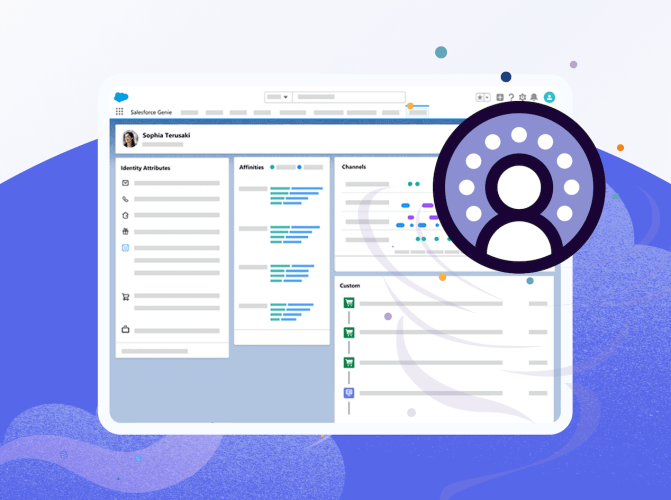How To Measure and Maximize the Return on Your Digital Service Experiences



As customers gravitate en masse toward digital self-service channels, it's critical to track and measure your performance. But how? The answer is understanding Return on Experience.

Erin Emery
Did you know that 34% of millennials would rather visit the dentist than call customer service? It’s an eye-opening stat that highlights the frustration many of us (millennial or not) sometimes feel. Today, more than ever, people seek customer service support through digital channels for faster solutions than a phone call can provide. As self-service becomes the preference for customers, you may wonder how you can track and measure the success of your digital service experiences. Return on Experience (ROX) measures do exactly that.
What is service ROX?
ROX is the return you receive on your investment in digital experiences. These include any digital interaction across all channels. The quality, speed, and breadth of your digital service experiences can either raise the bar for your competitors, or drive customers away. And the right solution can ensure you stay on time and on budget. Depending on your business, an end-to-end service experience could include personalized FAQs and other targeted content, along with self-service tools.
Customers aren’t the only people who can benefit from digital support, employees can too. A great agent-facing experience connects your employees to the tools and content they need to address issues with greater clarity and speed. For instance, NOW TV, a subscription streaming service, nearly doubled agent engagement levels with product and training information by linking content to CRM.
Deflection and more: ROX measures for service
You can measure your ROX with many of the service metrics you probably already track. Some digital service experiences are born with a single metric in mind. For instance, a self-service experience, such as a help center, may be focused solely on increasing call deflection. Think bigger to measure ROX. Consider metrics like deflection alongside first contact resolution and customer satisfaction. That’s because ROX is highest when you deliver an experience customers enjoy instead of making customers feel like self-service is a barrier between them and the help they need.
Here are a few metrics that you can use to measure ROX from digital service experiences:
- Deflection rate: This is the percent of cases that have been resolved, usually with self-service tools or content, before escalating to an agent. Measuring deflection can be complex because it’s not simply the number of customers helped by self-service – it’s the number of assisted cases prevented. To get an accurate view of deflection, you need to measure both whether the customer successfully resolved their issue and whether they would have sought assistance otherwise. If you use content to deflect a case as the customer is trying to start an assisted interaction, that’s an interaction you can count as a deflection. You can include a few simple questions with self-service tools and content that lets customers indicate whether the experience helped them avoid an assisted interaction.
- Average handling time: Farmers Insurance built a mobile app for reporting insurance claims. The platform reduced the time it takes to report an incident by phone from twelve minutes to as little as three minutes. You calculate average handling time (AHT) by adding interaction time, wait time, and post-interaction tasks for agents. Then divide the total time by the number of interactions handled. That’s your AHT. The simplest (and worst) way to reduce AHT is to rush agents. Why? Because it will result in a poor customer experience. Plus, first-time resolution rates will fall. Instead, an experience that helps agents deliver spot-on assistance faster reduces AHT and stress levels in the contact center. The result: happier and more productive agents and more satisfied customers.
- Customer satisfaction (CSAT): Track customer satisfaction by asking your customers to rate their assisted and self-service interactions. It’s common to use a 10-point scale for ratings. To measure ROX, conduct the same survey before you launch the experience and at regular intervals after. Customer satisfaction should climb as AHT, case escalation, and first-time resolution rates improve. Not seeing a big jump in satisfaction as other metrics improve? Add questions to your survey to pinpoint the problem.
- First contact resolution: Add up the number of first contacts and the number resolved on the first contact. Divide the number resolved on first contact by the total number of first contacts. For example, if you have 750 first contacts and resolve 500 on that first interaction, your first-time resolution rate is 66%. An experience that connects agents to information and then makes it easy to share what they’ve learned increases first-contact resolution. For instance, an agent can talk a customer through install instructions and then send a video with the same information. Sometimes agents and customers miscommunicate, leading the agent to troubleshoot the wrong problem. An experience can lend clarity by letting the customer send a product image or error message to an agent. The agent addresses the real issue – on the first try.
- Case escalations: Case escalations happen when an interaction is referred to a more senior or specialized person for resolution. To determine your escalation rate, divide the number of referred cases by the total number of cases. Better access to training content can help reduce escalations due to an agent’s lack of knowledge. Agent-facing tools that empower agents to handle a wider variety of cases can reduce escalations even more. Creating a more streamlined experience for agents helped athenahealth decrease the average number of people who have to touch cases from 2.75 to 1.1.
Where will you begin, or extend, your digital service experience? Let the metrics you want to improve help lead the way.
Learn about the total economic impact of Salesforce Experience Cloud
According to Forrester, businesses that invest in Experience Cloud see a 342% return on their investment within 3 years. Learn how you can quickly launch digital experiences, save money, and fuel business growth.


























